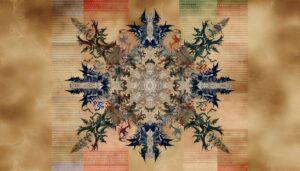Meaning of a Tree Symbol
The tree symbol, historically rooted in various cultures, represents profound concepts such as life, growth, and interconnectedness. In Mesopotamia and Egypt, it signifies cosmic order and divine connection.
Norse mythology's Yggdrasil and the Kabbalistic Tree of Life illustrate spiritual and metaphysical connections. Indigenous cultures view trees as emblematic of ancestry and renewal.
In literature, trees embody life cycles, wisdom, and resilience. Modern implications include climate mitigation and ecological symbiosis.
This multi-faceted symbol reflects its universal yet culturally nuanced significance. Understanding its layers reveals more about humanity's relationship with nature and the cosmos.
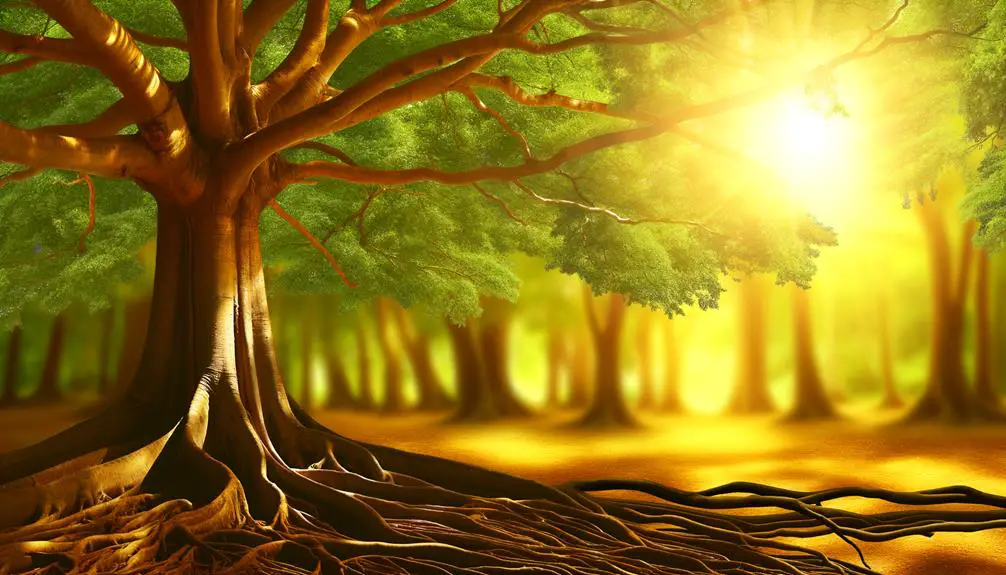
Key Takeaways
- Trees symbolize life, growth, and interconnectedness across various cultures and traditions.
- In religious contexts, trees often represent spiritual growth, divine wisdom, and a connection between the earthly and transcendent realms.
- Trees are seen as symbols of strength, resilience, and renewal, reflecting their natural characteristics and life cycles.
- Cultural interpretations of trees include themes of ancestry, wisdom, ecological balance, and harmony with nature.
- In literature, trees evoke themes of growth, mortality, and interconnectedness, enriching narrative complexity and exploring existential human experiences.
Historical Significance
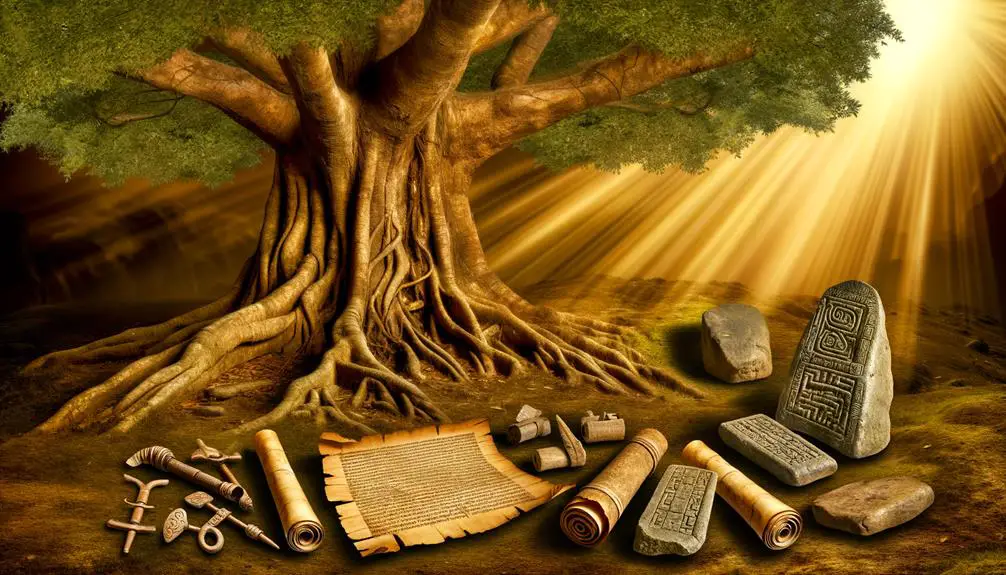
Throughout history, the tree symbol has frequently served as a profound emblem representing life, growth, and interconnectedness across various cultures and civilizations.
In ancient Mesopotamia, the Tree of Life depicted in cylinder seals exemplified cosmic order and fertility.
Egyptian iconography often features the sycamore tree as a conduit between the human and divine domains.
In the Norse tradition, Yggdrasil, the World Tree, connects the nine worlds, illustrating a complex cosmology.
The concept of the Arbor Mundi in medieval Christian theology encapsulated divine omnipresence and sustenance.
Each historical context reveals the tree's multifaceted significance, often embodying ecological and metaphysical principles, thereby highlighting its enduring presence in human consciousness and its role as a universal symbol of continuity and renewal.
Cultural Interpretations
Examining the tree symbol through the lens of cultural interpretations reveals a rich tapestry of meanings that reflect the values, beliefs, and traditions unique to each society. For instance, in many indigenous cultures, trees are seen as ancestors or spirits, embodying the life force of the community. In contrast, Western cultures often view trees as symbols of growth and renewal.
The cultural symbolism of trees can be categorized into various themes:
- Roots and heritage: Representing deep connections to ancestry and tradition.
- Growth and life cycle: Signifying personal development and the passage of time.
- Strength and resilience: Symbolizing endurance and stability.
- Wisdom and knowledge: Associated with enlightenment and understanding.
- Harmony with nature: Reflecting ecological balance and interconnectedness.
This multifaceted symbolism underscores the universal yet culturally specific nature of the tree symbol.
Religious Symbolism
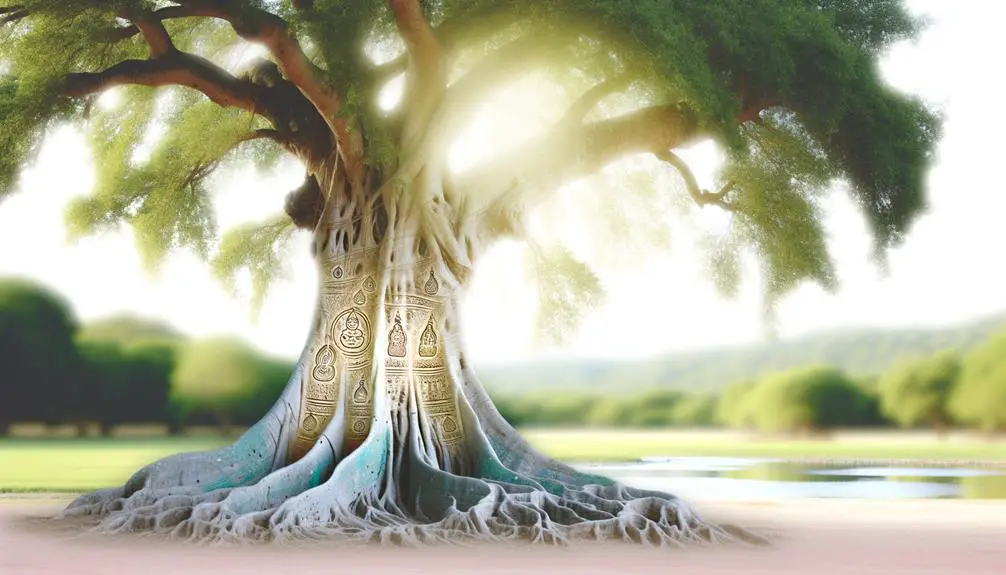
In religious contexts, the tree symbol often serves as a profound representation of spiritual growth, divine wisdom, and the connection between the earthly and the transcendent.
For instance, in Christianity, the Tree of Life in the Garden of Eden symbolizes eternal life and divine providence, while the cross, often referred to as the 'Tree of Crucifixion', signifies salvation and resurrection.
In Buddhism, the Bodhi tree under which Siddhartha Gautama attained enlightenment epitomizes spiritual awakening and inner peace.
Similarly, the Kabbalistic Tree of Life in Jewish mysticism illustrates the ten sephirot, or divine emanations, linking humanity to the infinite.
These arboreal symbols encapsulate complex theological principles, embodying the nexus between divine domains and human experience.
Literary Depictions
Literary depictions of trees frequently utilize them as potent symbols, often representing themes such as growth, mortality, and interconnectedness within the human experience. Authors employ arboreal imagery to evoke profound emotional and intellectual responses, leveraging the tree's multifaceted symbolism to enrich narrative complexity.
Trees serve as metaphors for:
- Life cycles: Emphasizing stages from birth to death.
- Wisdom and knowledge: Often depicted as ancient and enduring.
- Strength and resilience: Reflecting the ability to withstand adversity.
- Interconnectedness: Illustrating the symbiotic relationships within ecosystems.
- Transformation and renewal: Highlighting seasonal changes and regeneration.
Through these symbolic uses, trees in literature function as dynamic elements, encapsulating the essence of human experiences and philosophical inquiries. Their depiction provides a nuanced framework for exploring existential themes.
Modern Implications
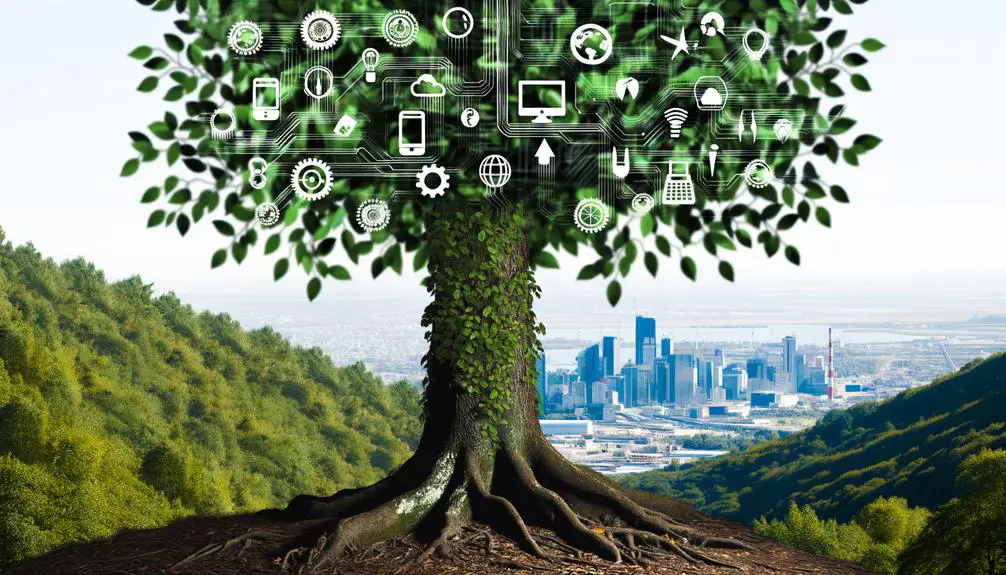
Beyond their literary representations, trees assume profound modern implications in ecological, cultural, and technological contexts. Reflecting their enduring significance in contemporary discourse, trees act as critical carbon sinks, mitigating climate change by sequestering atmospheric CO2.
Culturally, they embody resilience and interconnectedness, symbolized in global conservation movements and indigenous practices.
Technologically, advancements in dendrochronology provide precise climatic data, aiding in environmental reconstructions. Urban forestry integrates biophilic design principles, enhancing urban resilience and human well-being.
Moreover, biomimicry leverages arboreal structures for sustainable innovation in architecture and materials science. Understanding these multifaceted roles underscores the necessity of integrating tree conservation into policy frameworks, ensuring the longevity of their ecological and symbolic contributions to modern society.
Conclusion
The tree symbol, deeply entrenched in historical, cultural, religious, and literary contexts, epitomizes the quintessence of life, growth, and interconnectedness.
Echoing the mythic Yggdrasil and the biblical Tree of Knowledge, it transcends temporal and spatial boundaries, embodying a universal archetype.
Contemporary interpretations continue to draw from its rich tapestry of meanings, underscoring its enduring relevance.
Consequently, the tree remains an indelible emblem of perennial wisdom, resilience, and the cyclical nature of existence.

